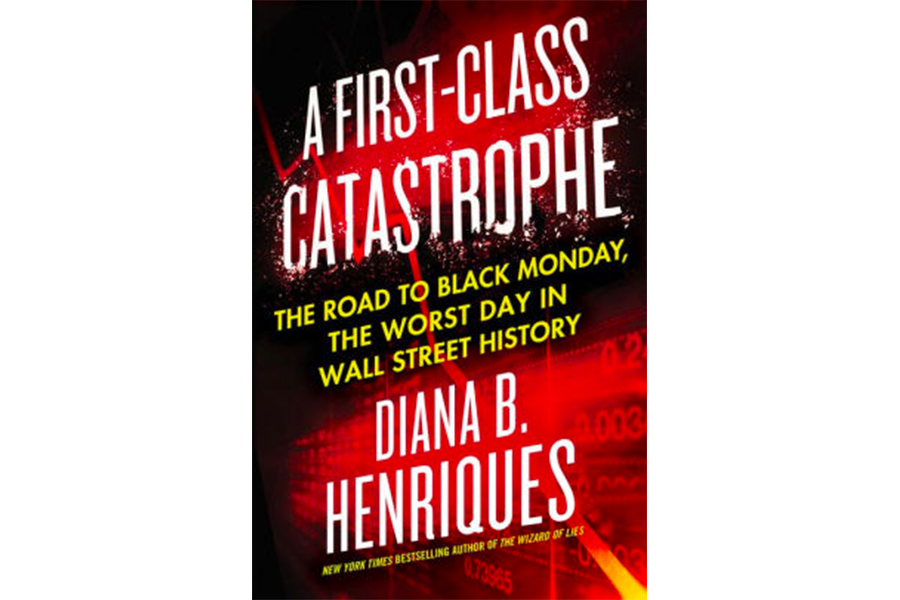History's great stock crash? Not 1929 or 2008, but 1987
Loading...
On an autumn Monday morning, the New York Stock Exchange – the ultimate too-big-to-fail financial institution – crashed into modernity.
High-speed computer trading, impossibly complex financial "derivatives," and skimpy regulation had all contributed to a bull market that many people assumed would never end. But end it did on that day, Oct. 19, 1987, which still marks the greatest stock market fall in history, a shocking 22 percent plunge in the Dow Jones Industrial Average.
This 30-year-old fiasco holds plenty of crucial lessons for us today, just 9 years after the world financial system again flirted with disaster, contends bestselling "Wizard of Lies" author Diana B. Henriques in her illuminating and vitally important new book A First-Class Catastrophe: The Road to Black Monday, the Worst Day in Wall Street History.
"It was hair-raising, it was a cliff-hanger," says Henriques, a former New York Times reporter, in a Monitor interview. "We almost didn't make it through."
Q: What drew you to write about this topic?
I was really trying to solve a mystery.
I remember this as the biggest calamity I'd ever seen up until that time. But when I talked to people as the 30th anniversary approached, I was astonished by how few people remembered it. Or they had some rosy mythology that it was the crash without consequences, that it didn't hold any lessons.
That didn't match my experience.
I wanted to provide people with a more vivid account of what happened. It was a lot worse than we remember today, and it was a lot worse than we even knew at the time. Behind the scenes, regulators were juggling hand grenades for weeks afterward.
And it was chock-a-block with lessons that haven't been dealt with today. Black Monday was like the crystal ball crash: It showed us a future.
Q: How had investing changed by the time 1987 rolled around?
Before, there was more of a mom-and-pop individual marketplace: You study the company, look at its prospects, make the decision about it, and place your bet.
We moved very rapidly toward where you were buying index funds – just picking S&P 500 stocks as a whole – and you just wanted to know where the market would go.
Meanwhile, a variety of financial derivatives emerged that allowed people to place bets with far less skin in the game. And the market was becoming dominated by supersize investors using computer-driven strategies to select giant numbers of stocks.
Q: Then-Senator Bob Dole wondered whether financial derivatives were "legalized gambling." Were they?
I'm not of the belief that there is no justification for financial derivatives. They can be important tools for hedging, for portfolio allocation. But they can also be important tools for reckless speculation.
It behooves us to understand how those financial derivatives are linked to the rest of the marketplace. Not even Bob Dole imagined the time would come when trading on the Chicago Mercantile Exchange and the New York Stock Exchange could be so intertwined.
Black Monday showed us those days were over. You needed to see it was all one market.
Q: Among other things, the Chicago exchange focuses on futures, which are contracts to buy or sell something at a certain price. You write that there's one commodity that you can't buy futures for: onions. It's because of a long-ago scandal. I'm a trained observer, and I've noticed that onions have not vanished from our plates. Does that suggest that futures aren't necessary?
Actually, people will tell you that onion prices are a lot more volatile than they'd be if there were onion futures.
The problem with the advent of financial futures is that they're different from agricultural futures. In the world of wheat and pork bellies, the future price actually becomes the market price. But what develops in the 1980s is a futures market and a cash market that can diverge. That's what we had in the lead-up to the stock market crash.
Q: How should the market be fixed?
We need a regulatory system that matches reality. No one is regulating the entire elephant: I regulate the ear, I regulate the trunk, but no one watching out for what this giant elephant is doing.
I try to distinguish between two kinds of risk. One is the risk that the market will fall. If a stock market falls, it corrects itself by rising again.
But the other risk is that it not just falls but falls apart and ceases to function, shattering the normal structure of our financial system.
That's the risk that was exposed so vividly on Black Monday and the day after.
Q: What now?
We need to wipe the board clean and decide what kind of regulatory mechanisms we need for the market we have today.
It seems unthinkable after 1931 or 1932 that anything big would change, yet we designed a new regulatory system with the New Deal.
I haven't given up hope. We need to understand that big things can be done to make the market less fragile and volatile. But it takes insistence on the part of citizens.







